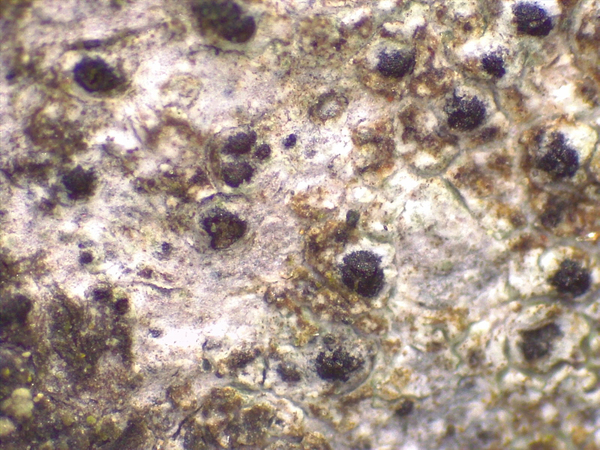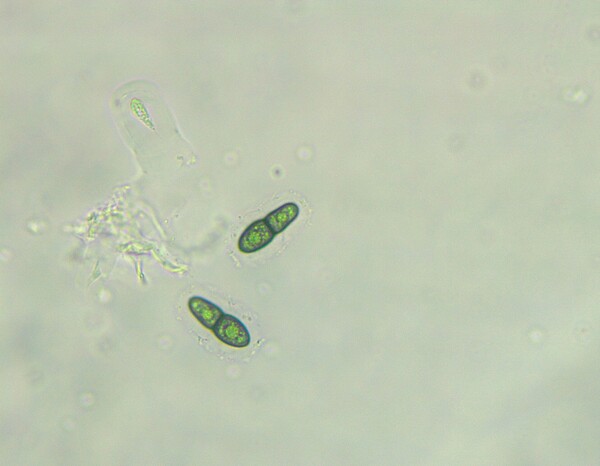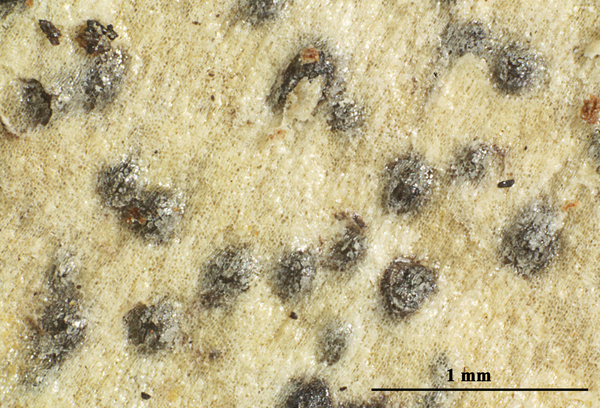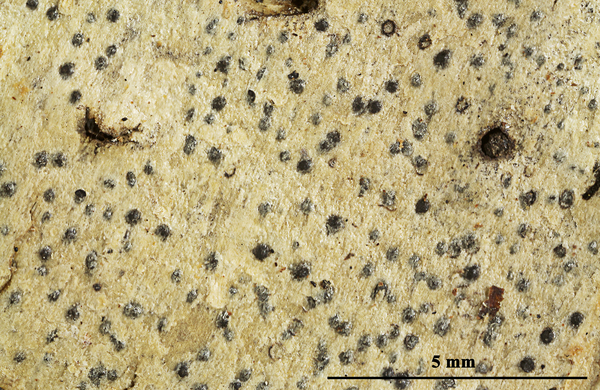Mycomicrothelia confusa D. Hawksw.
Bull. Brit. Mus. Nat. Hist., Bot. ser., 14: 76, 1986 (“1985”).
Synonyms:
Distribution: N - Piem (Isocrono & al. 2007), Lig (Giordani & al. 2009). C - Marc (Frati & al. 2004, Frati & Brunialti 2006), Tosc (Loppi & Putortì 1995, Loppi & al. 1994, 1995, 1997b, 2002, 2002b, 2006, Ravera 2006b, Lastrucci & al. 2009, Brunialti & Frati 2010, Brunialti & al. 2012b, Paoli & al. 2012), Laz (Ravera 2006, Ravera & al. 2006, Ravera 2006c, Giordani & al. 2009, Zucconi & al. 2013), Mol (Caporale & Ravera 2020), Sar (Zedda 2002, Rizzi & al. 2011, Di Nuzzo & al. 2022). S - Camp (Brunialti & al. 2013, Ravera & Brunialti 2013), Pugl (Ravera & al. 2019b), Si (Nimis & al. 1994, Ravera & al. 2023b, 2024).
Description: Thallus crustose, endosubstratic, whitish to cream-coloured, sometimes delimited by a purplish black line. Perithecia black 0.2-0.3(-0.4) mm across, hemispherical to slightly flattened at top, with a dark brown, 25-40 µm thick involucrellum reacting K+ olive-green, extending laterally up to the base into an indistinct, up to 0.0025 mm wide basal fringe, formed of hyphae and incorporated bark cells. Exciple entirely confluent with the involucrellum, often poorly developed to absent in lower part, of interwoven hyphae. Hamathecium of branched and anastomosing, septate pseudoparaphyses; hymenial gel I-. Asci 8-spored, elongate-clavate, with two functional wall layers, fissitunicate, with an internal apical beak, K/I-. Ascospores, 1-septate, strongly constricted at septum, brown, sole-shaped, the upper cell usually larger and rounded the lower one attenuated, 15-25 x 6-10 µm, the wall warted, often with a thin gelatinous sheath swelling in K. Pycnidia unknown. Photobiont absent or thallus hyphae loosely associated with Trentepohlia . Spot tests: thallus K-, C-, KC-, P-, UV-. Chemistry: without lichen substances.Note: a facultatively lichenised species growing on the smooth bark of deciduous trees in shaded-humid situations; certainly more widespread in Italy.
Growth form: Fungus
Substrata: bark
Reproductive strategy: mainly sexual
Most common in areas with a humid-warm climate (e.g. most of Tyrrenian Italy)
Commonnes-rarity: (info)
Alpine belt: absent
Subalpine belt: absent
Oromediterranean belt: absent
Montane belt: very rare
Submediterranean belt: absent
Padanian area: absent
Humid submediterranean belt: very rare
Humid mediterranean belt: absent
Dry mediterranean belt: absent
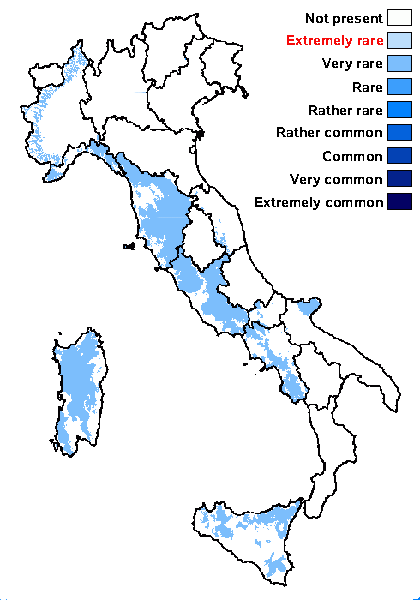
Predictive model
Herbarium samples
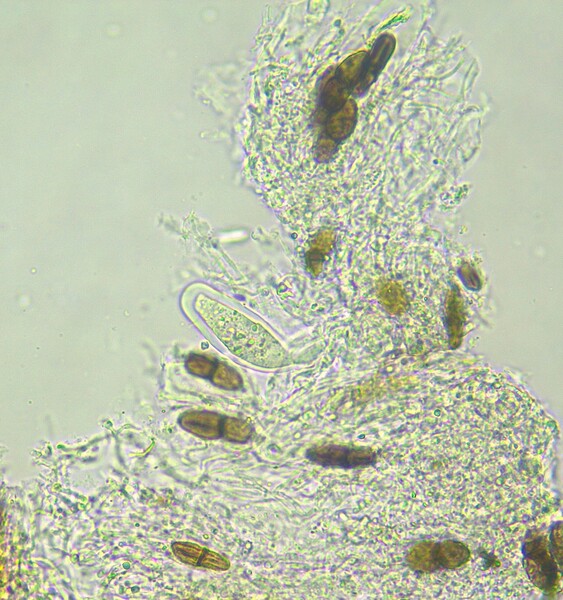
Deborah Isocrono
Italia, Piemonte, TO, Ivrea, on a cultivated olive tree. Herbarium Isocrono n. 38
young ascus
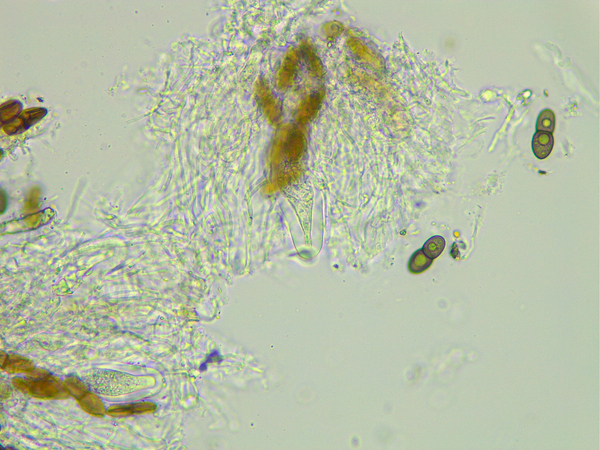
Deborah Isocrono
Italia, Piemonte, TO, Ivrea, on a cultivated olive tree. Herbarium Isocrono n. 38
ascospores
Growth form: Fungus
Substrata: bark
Reproductive strategy: mainly sexual
Most common in areas with a humid-warm climate (e.g. most of Tyrrenian Italy)
Commonnes-rarity: (info)
Alpine belt: absent
Subalpine belt: absent
Oromediterranean belt: absent
Montane belt: very rare
Submediterranean belt: absent
Padanian area: absent
Humid submediterranean belt: very rare
Humid mediterranean belt: absent
Dry mediterranean belt: absent

Predictive model
| Herbarium samples |

Deborah Isocrono
Italia, Piemonte, TO, Ivrea, on a cultivated olive tree. Herbarium Isocrono n. 38
young ascus

 INDEX FUNGORUM
INDEX FUNGORUM
 GBIF
GBIF
